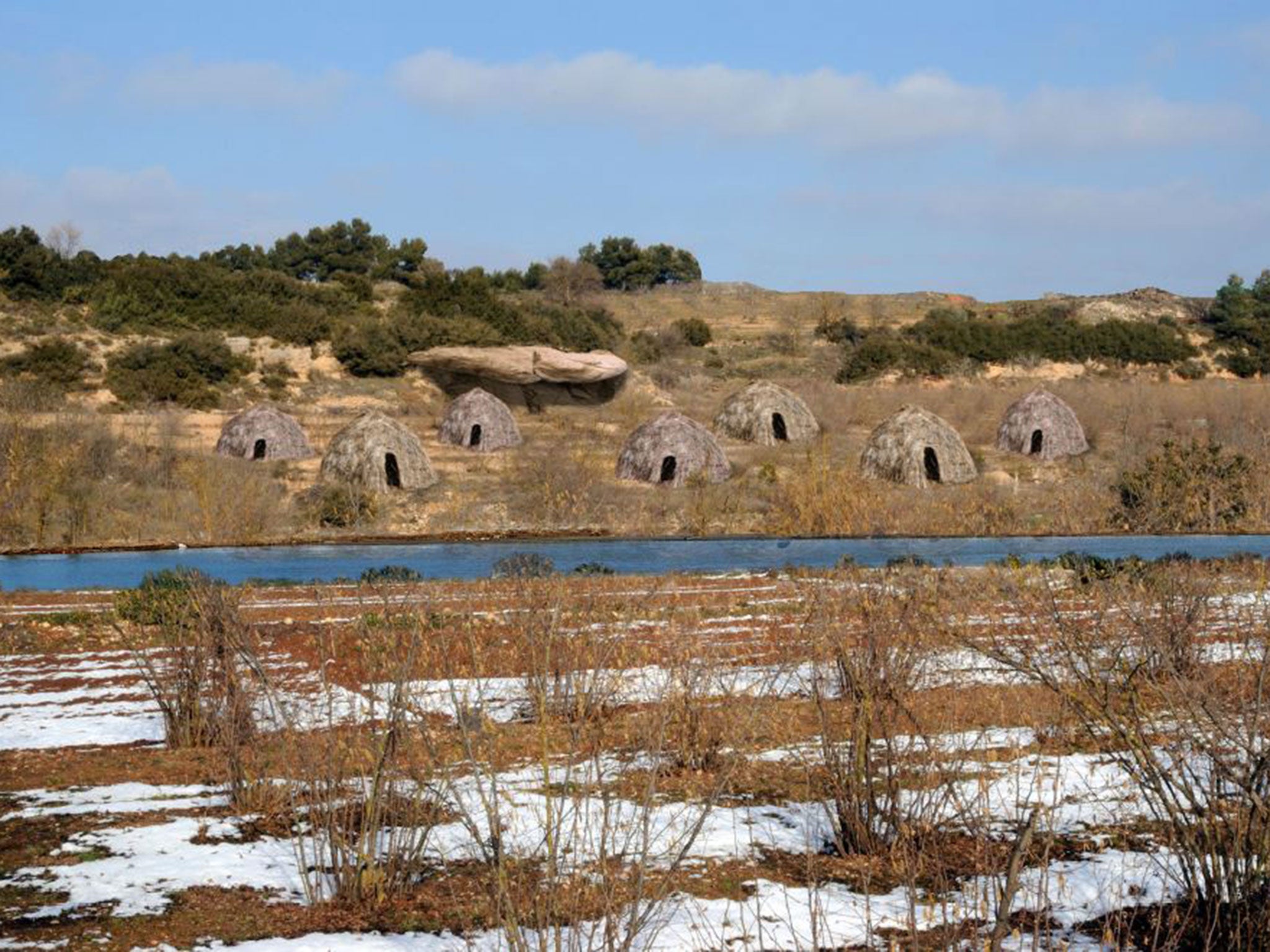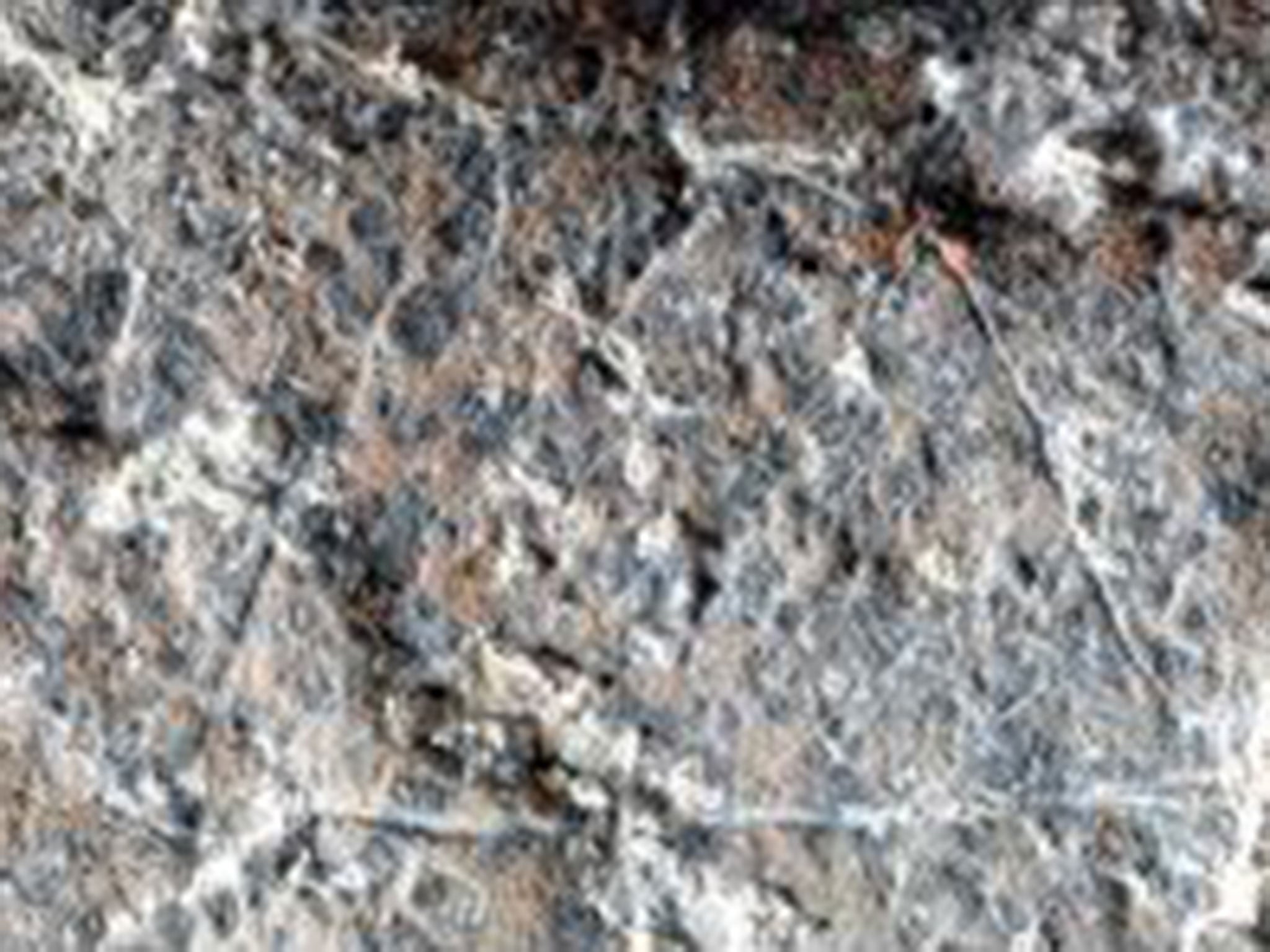Prehistoric rock carvings 'were humanity's earliest architectural plans'
Researchers say 14,000-year-old carvings by 'Paleolithic Picasso' depict a campsite built by early hunter-gatherers

On a Spanish river bank 14,000 years ago, someone carved seven semi-circular shapes on a rock. Whether the artist realised the significance of the work is unknown – but, according to archaeologists, the resulting doodle could well be humanity’s first architectural drawing.
Researchers have put forward evidence that the granite slab discovered on a prehistoric site near Barcelona carries a depiction of a campsite built by early hunter-gatherers as they roamed the Iberian peninsula in search of prey.
If the picture is of semi-circular huts, it is likely to have been the work of a Paleolithic rule-breaker who shook up the artistic orthodoxy of the day in much the same way as that other, much later Spanish iconoclast, Pablo Picasso.
The authors of a research paper on the find said that its creator appeared to have broken the rules of prehistoric art by departing from its stylised fixation on animal or human figures and instead drawing the built landscape. Marcos García Diez and Manuel Vaquero, the archaeologists behind the discovery, said they believed the artist had drawn a camp of seven grass or animal hide huts – with each structure’s covering represented by hatched lines – and in so doing created the earliest known depiction of human dwellings.

Dr García Diez, of the University of the Basque Country, said: “This shows for the first time the ability of prehistoric hunter-gatherers to represent society. It’s the earliest-ever representation of huts forming a campsite, a Paleolithic village.”
The 14cm-wide rock was first discovered in 2013 and was regarded as insignificant by the scientists until it was cleaned of its protective crust of dirt to reveal the shapes, which are thought to have been engraved in a short period of time using another stone or a flint tool.
The researchers believe that because the huts are arranged on three levels, the Paleolithic Picasso may have been trying to give a sense of visual depth to his or her drawing. Others have suggested that the work, which has been dated to 13,800 years ago, may in fact show highly stylised animals. But if it is a drawing of circular huts, it would predate the oldest known images of dwellings by up to 6,000 years.
Writing in the PLOS One journal, Dr García Diez and Dr Vaquero said the image should be considered as “photographic” and, as such, represented a significant break from other art of its era.
They said: “It mainly represents a human landscape, suggesting that the human world was the main concern of the artist. Given the social meaning of campsites in hunter-gatherer organisation, it can be considered one of the first artistic representations of the domestic and social space of a human group.”
The scientists said their hypothesis was backed by archaeological and ethnographic evidence, which showed that early human groups built simple dome-shaped huts when moving around hunting grounds.
Join our commenting forum
Join thought-provoking conversations, follow other Independent readers and see their replies
Comments
Bookmark popover
Removed from bookmarks